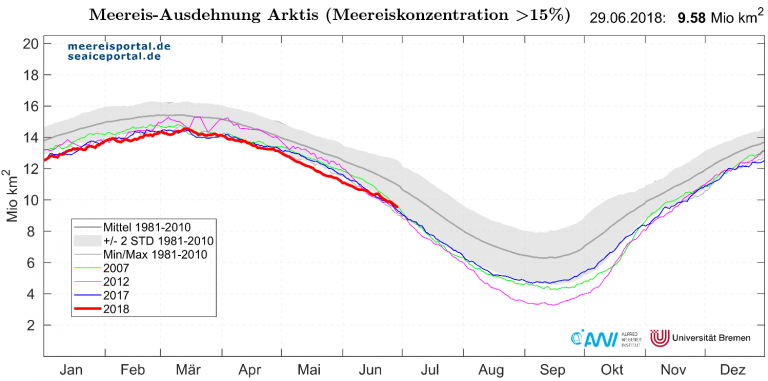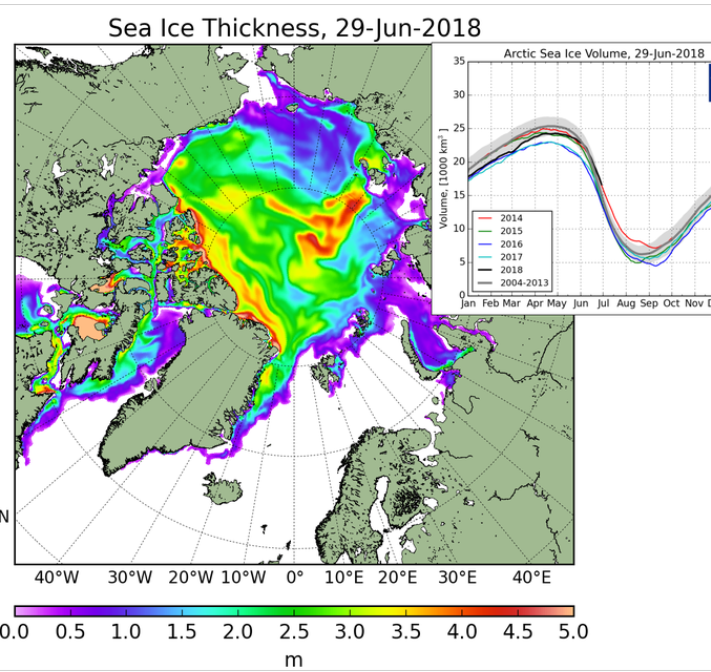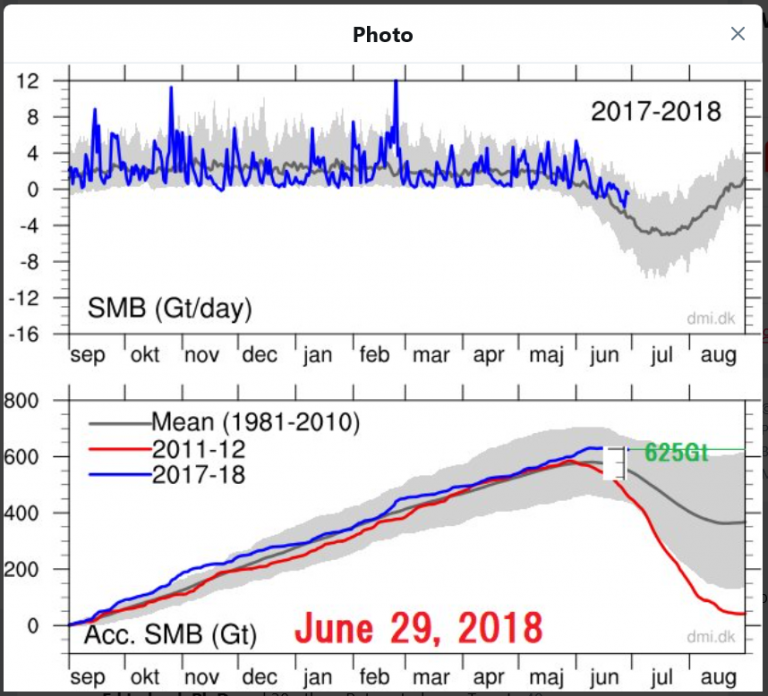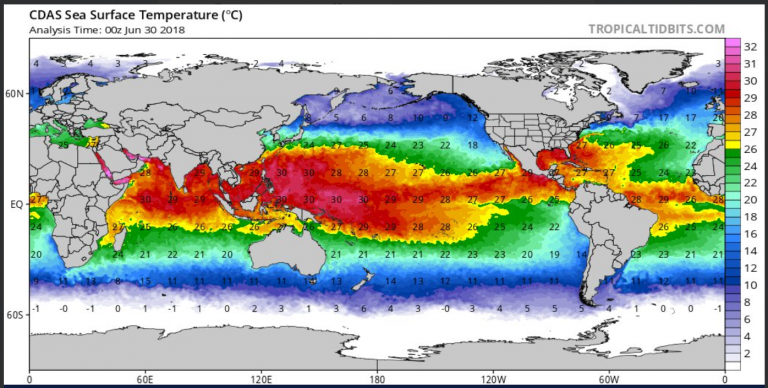By P Gosselin on 30. June 2018
The following Arctic sea ice area chart from the Bremerhaven-based Alfred-Wegener Institute shows a current sea ice area that is about 1 million square kilometers below the mean.
Chart: Alfred Wegener Institute, University of Bremen.
But don’t let the lower than normal sea ice area fool you into thinking the ice is disappearing, and that the alarmist climate scientists are right. They aren’t.
In turns out that the ice is far thicker than it’s been over the past years, and so total ice volume, which is what really counts, is rebounding impressively, according the most recent data.
Arctic ice volume 3rd highest in 16 years
Japanese skeptic blogger Kirye at posted at Twitter: “The current #Arctic sea ice volume has been the 3rd highest in 16 years since June 24, 2018, according to the DMI.”
The chart from the Danish Meteorological Institute (DMI) shows that the Arctic ice volume on June 29 was dead normal:
Source: DMI.
Moreover, Arctic sea ice thickness is well above what was observed 10 years earlier, in 2008.
June ice volume reaches highest level in 13 years
Charting the Arctic ice volume for June 26, we see that it has reached its highest level in 13 years:
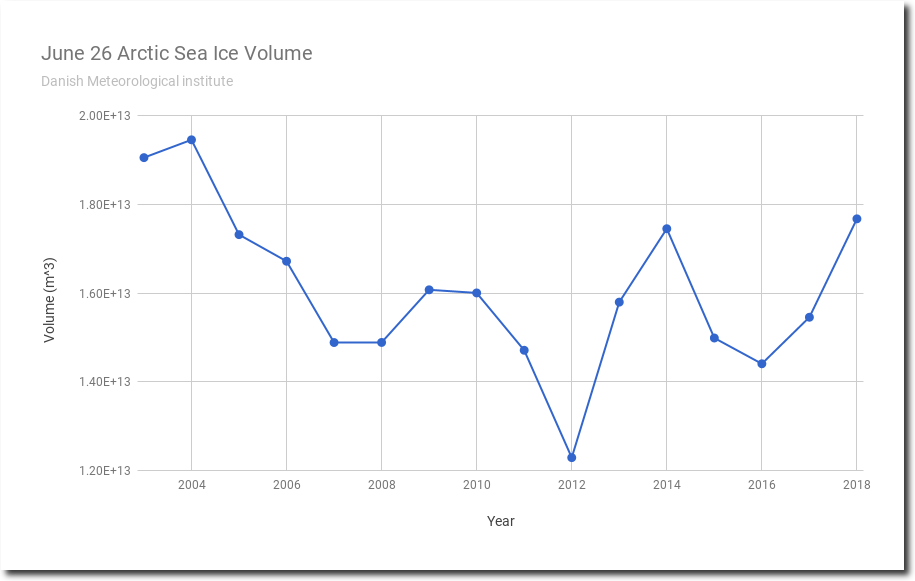
Chart taken from Real Climate Science, Tony Heller.
Clearly Arctic sea ice has stabilized over the past 10 years and it is nowhere near disappearing, as a number of hysterical scientists were predicting just 10 or 12 years ago.
So now expect global warming alarmists to ignore the Arctic and to focus on weather anecdotes to keep their climate catastrophe scam going.
Greenland ice mass balance skyrockets
Also Greenland ice mass balance remains far above normal, some 75 billion metric tonnes above the mean.
Chart source: DMI, via Kirye at Twitter.
No climate canary in a coalmine detectable here.
This year is also seeing the James Bay and Hudson Bay still almost completely covered with ice on June 30, as the following CDAS chart shows:
Global sea surface temperatures. Source: Tropical Tidbits.
North Atlantic sea surface temps well below normal
So what could be behind the slow ice melt in northeastern Canada, growing Arctic ice volume, and Greenland ice mass?
One major factor is likely the much colder than normal north Atlantic sea surface temperature that’s keeping the region refrigerated.
The following chart shows the anomaly from the mean:
 Source: Tropical Tidbits.
Source: Tropical Tidbits.
The North Atlantic is well below normal temperature.
Cold tropical Atlantic to suppress hurricanes?
Also the tropical Atlantic, from the west coast of Africa to the Caribbean, is colder than normal. According to hurricane expert Philip Klotzbach at Twitter, the temperature pattern over the Atlantic is opposite of what was observed during the summer of hurricane intense 2017.
Klotzbach suspects the current cold across the tropical Atlantic could act to suppress hurricane formation. That would be good news.

